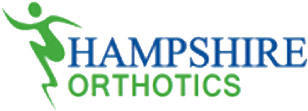Plagiocephaly - what is it?
Positional Plagiocephaly, also known as “Flathead Syndrome” is a condition characterised by a flattening on one side of the back of the head. It may also involve bulging of the forehead, fullness of the cheek, ear misalignment and a larger eye on the same side as the flattening.
Under the broad term “Flathead Syndrome” there are two other head shapes: Brachycephaly and Dolichocephaly also sometimes known as Scaphocephaly. In Brachycephaly the head is wide in relation to its length and appears flat at the back. The head may have a high “peaked” appearance, and sometimes both sides of the forehead can be bulged. Dolichocephaly is when the head is narrow in relation to length (front to back).
What Causes Flat Head Syndrome?
Positional Plagiocephaly can be caused by a number of factors involving positioning such as the position in the womb, the birth process, extended time spent in a neonatal unit and often the infant's preferred sleeping position. It can also be caused by a condition called Torticollis.
Normally any asymmetry settles in the first few weeks after birth. However, because the baby’s skull is still malleable and can be moulded by external forces any existing flattening may not necessarily disappear of its own
accord.
What is Torticollis?
Torticollis is a condition in which a tight or shortened muscle in one side of the neck causes the head to tilt or turn to one side, resulting in the infant resting its head in the same position. It is important to have suspected Torticollis diagnosed and to have it treated by a specialist physiotherapist, chiropractor or cranial osteopath. We can advise you on this.
Back to sleep
Although the “Back to Sleep” campaign has been linked to the increased incidence of Positional Plagiocephaly, it has saved lives by reducing the incidence of Sudden Infant Death Syndrome (SIDS). Therefore babies should always be placed on their backs to sleep.
What is Repositioning and how do I do it?
By alternating the head position you can reduce the risk of your baby developing Positional Plagiocephaly.
Until 4-5 months of age repositioning and tummy time techniques can be enough to encourage natural correction of your baby’s head shape. At night consider alternating the end of the cot where your baby lays its head. Turn your baby’s head so that it does not lie on the flattened side.
Tummy Time
During the daytime encourage your baby to spend as much time as possible on its stomach (tummy time). Most babies dislike this initially as they do not have the strength to hold their head up. However it is important to persevere and gradually build up the length of time spent on their tummy. This helps them build strength in their neck and trunk muscles to progress towards pushing up and crawling.
Tummy time can be made easier by using a support under the chest enabling them to lift their head more easily. As their strength develops you can make it more challenging by removing the support. Make tummy time fun by spending time lying down with your baby on top of or in front of you. Use interactive toys to entertain them.
You and Your Baby
You should also consider your baby’s head position whilst carrying, feeding or changing them. Alternate the side on which you do the activities, as this will encourage them to look and turn in both directions. It is important that you feel confident and safe in lifting and carrying your baby, therefore gradually build your ability to use both sides comfortably and
securely, and together you can build your own muscle strength and control. As your baby’s strength develops you should spend some time carrying them tummy down, as this will encourage them to look up, further developing neck and trunk strength.
Travel
Baby travel systems are conveniently designed to click together so that there is no need to wake your baby when transporting them from the car to the house. Unfortunately this can also mean long periods of time lying on their back with their head against a hard surface. Minimise the time your baby spends in the travel system when not
travelling.
If repositioning techniques have not brought about sufficient improvement in your baby's Plagiocephaly or head shape, then Cranial Remoulding Therapy is an option. This should not be considered until the infant is at least
3 to 4 months old. For more information on LOCband helmets click here
Before the age of 3-4 months repositioning is the first option. When your baby is lying down, try to reposition the baby’s head as much as possible with the objective of encouraging your baby to rest its head on the non-flattened area. During the day, try to have a lot of time with no pressure on the head, e.g. sit baby on your lap or carry baby in a sling.

